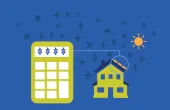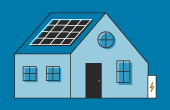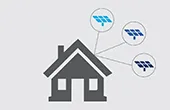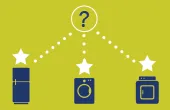For homeowners, making energy upgrades is as simple as having an energy audit, choosing which upgrades to make, and implementing those changes. But for renters, it’s a bit more complicated – because you don’t own the property you live in, you often don’t have the ability to make certain energy upgrades, such as installing rooftop solar panels, adding insulation, replacing windows, and more. However, as a renter, there are steps you can take to reduce your carbon footprint and save money on utility bills. Here are just a few options:
Continue readingSolar news: January 10th, 2020
In this week’s Solar News Roundup, we’re talking storage: Google and NV Energy join up to bring a massive solar-plus-storage plant to a data center outside of Las Vegas, and manufacturer Kyocera is set to launch a new type of lithium-ion battery.
Continue readingCertainTeed solar shingles: compare the original solar roof to other options for your home
Before Elon Musk shook up the home solar power industry with the Tesla solar roof, homeowners and businesses were talking about solar shingles. The current leader in solar shingles is CertainTeed, whose solar roof products can be integrated as part of your existing roof.
Continue readingQ&A with Sungage Financial
When making the switch to solar, many EnergySage shoppers end up financing their installation with a loan from Sungage Financial. Based in Boston, Massachusetts, Sungage currently provides financing solutions through their partner installer network in 33 states and Washington D.C. EnergySage conducted a Q&A with Mike Gilroy, Sungage CEO, to learn more about their company, what customers should consider when choosing a solar loan, and how they differ from other specialized solar lenders.
Continue readingFederal ITC extension: everything you need to know
Homeowners, solar companies, and industry advocates alike were given a big Christmas gift in 2015 when Congress approved the 2016 federal spending bill and extended the solar panel tax credit. The December 18 bill contained a 5-year solar tax credit extension, which makes solar energy more affordable for all Americans. Wondering how this impacts you? EnergySage has the answers.
Continue readingHybrid energy systems: combining wind plus solar
Renewable energy resources are an easy, cost-effective way to reduce both electricity costs and carbon emissions. However, a common criticism leveled at renewable energy resources like wind and solar is: what happens when the wind isn’t blowing and the sun isn’t shining? There are many options to solve for this criticism, from net metering policies to pairing solar with energy storage. One additional new method for combating this critique is through hybrid energy systems: by installing wind and solar hybrid systems, renewable energy developers are finding innovative ways to produce more energy with even greater consistency.
Continue readingSRECTrade: everything you need to know about the leading SREC aggregator
Solar energy renewable certificates (SRECs) are some of the most attractive solar incentives available in the United States. Many states with renewable portfolio standards (RPS) have special “solar carve-outs” that require a certain amount of energy production to come from solar. These states use SRECs as a way to promote solar installations and compensate system owners for the energy their panels generate.
Continue readingThe best EnergySage videos of 2019
Finding the right solar solution can be difficult, and there are a lot of questions to address before putting panels on your roof. To help you save time in your solar research, EnergySage created quick videos to answer the most important solar questions in under three minutes.
Continue readingSmart Grids: everything you need to know in 2020
The electrical grid–the interconnected web of power plants and transmission lines that keeps the lights on throughout the country–is a feat of modern engineering. However, it was built for a different era. In order to accommodate the increase in distributed energy resources (like solar), as well as to improve the overall resilience of the electrical system, the grid of the future will be a smart grid.
Continue readingDuke Energy solar rebates: a new solar incentive for North Carolina
Update: Duke Energy has run out of available funds for rebates in 2020. Solar customers can join a waitlist for the rebate.
North Carolina has long been one of the top states for solar thanks to its utility-scale solar farms, but over the past few years, homeowners in the Tar Heel State haven’t seen many financial incentives to go solar. A newly-announced solar rebate from Duke Energy will help property owners in North Carolina save thousands on their up-front solar installation costs.
Continue reading




